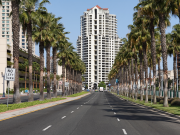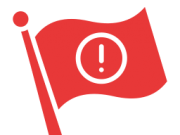The Philippines is no stranger to natural disasters. In 2023 alone, tropical cyclones caused an estimated Php18.1 billion in damages. While mitigating the occurrence of these events is beyond our control, we can take proactive steps to safeguard ourselves from their financial repercussions. Home insurance is essential for Filipino homeowners, offering critical property protection.
Home Insurance Essentials: What You Need to Know
This comprehensive guide aims to provide Filipino homeowners with a clear understanding of home insurance policies, their benefits, and how to choose the right coverage to protect their investments.
What is a Home Insurance? Home insurance is a crucial financial safety net for Filipino homeowners. It protects against losses or damages to residential properties and their contents, safeguarding individuals from the consequences of unexpected events such as accidents, natural disasters, or liability claims. Natural disasters are common in the Philippines, and having home insurance is particularly important. This guide will explore different home insurance policies, their key features, and how to choose the best policy for your specific needs.
Types of Home Coverage
Understanding the different types of coverage available to home insurance in the Philippines is essential for ensuring that your property and assets are adequately protected. The coverage can generally be divided into Basic Coverage and Extended Coverage, each offering varying degrees of protection depending on the risks you want to mitigate.
1. Basic Coverage
Basic coverage forms the foundation of most home insurance policies. It typically includes protection against common and high-risk perils that could cause significant damage to your property. These perils often include:
- Fire and Lightning: Protects against damage caused by fire outbreaks, including those initiated by lightning strikes. This is one of the most fundamental aspects of home insurance.
- Typhoons and Floods: Given the Philippines’ vulnerability to tropical storms, typhoons and flood coverage are critical components of home insurance. This protection safeguards your property against damage from strong winds, heavy rains, and rising waters caused by these natural events.
- Earthquakes: The Philippines is located along the Pacific Ring of Fire, making it prone to seismic activity. Earthquake coverage helps repair or rebuild homes damaged by tremors, including structural damage and aftershocks.
- Allied Perils: These include a range of additional risks such as falling aircraft, vehicular impact, explosions, and smoke damage. Coverage for these events is often bundled with fire insurance.
Basic coverage is essential for safeguarding your home against the most common and destructive events that could result in total loss or extensive damage. Without it, homeowners would be financially vulnerable in the aftermath of such incidents.
2. Extended Coverage
Extended coverage goes beyond the basics, offering additional layers of protection that address less common but still significant risks. This type of coverage is ideal for homeowners who want a more comprehensive safety net. Extended coverage typically includes:
- Loss of Use: This covers additional living expenses if you’re unable to live in your home due to a covered loss. For example, if a fire damages your home and you need temporary lodging, this coverage can reimburse you for the cost of a hotel and meals.
- Water Backup: This protects against damage caused by water backing up from a sewer or drain. This coverage can be valuable in areas prone to flooding or heavy rainfall.
- Robbery and Burglary: Provides compensation for losses resulting from theft or break-ins, covering stolen items and damage to property during the crime.
- Accidental Breakage of Fixed Glass: Covers the cost of repairing or replacing windows and other fixed glass elements in the home that are damaged due to accidents.
- Personal Liability Insurance: Protects homeowners against legal liability if someone is injured on their property or if the homeowner accidentally causes damage to someone else’s property.
- Coverage for Valuables: This covers high-value items such as jewelry, antiques, and artwork. This coverage often requires the homeowner to declare and substantiate the item’s value.
- Alternative Accommodation: Offers financial support for temporary housing if your home becomes uninhabitable due to a covered event.
- Household Employee Insurance: Provides benefits such as personal accident insurance and hospitalization coverage for household staff.
Extended coverage is essential for homeowners with valuable possessions or who face higher risks. It ensures that in the event of a loss, whether from theft, liability claims, or other specific incidents, the homeowner is not left to bear the financial burden alone.
Key Features
A comprehensive home insurance policy typically includes the following essential components:
- Dwelling Coverage. This covers repairing or rebuilding the insured dwelling costs in the event of damage or destruction due to a covered peril. The coverage amount is usually based on the home replacement cost, which means the insurance company will pay for rebuilding the home to its original condition, regardless of the actual value of the damaged property.
- Personal Property Coverage. This protects the insured’s personal belongings, including furniture, electronics, and clothing, against loss or damage. The coverage amount is typically a percentage of the dwelling coverage. It is important to ensure that personal property coverage is adequate to cover the replacement cost of your belongings, especially if you have valuable items.
- Liability Coverage. This protects you from legal liability if someone is injured on your property or if your actions cause damage to someone else’s property. It can help cover medical expenses, legal fees, and settlements.
Kinds of Home Insurance
The specific coverage options for each type of policy depend on the insured’s specific living situation. Here are the most common:
1. Homeowners Insurance
This is suitable for individuals who own their primary residence. It provides comprehensive coverage for the dwelling, personal property, and liability.
2. Renters Insurance
This is designed for renters who do not own their residences. It covers the renter’s personal belongings and liability. Renters insurance is relatively affordable and can provide essential protection for renters.
3. Condominium Insurance
This is for owners of condominium units. It typically covers the unit’s interior, personal property, and liability. The condominium association is usually responsible for insuring the common areas of the building.
It is important to note that coverage limits and deductibles may vary depending on the insurance provider and the specific policy. When choosing a home insurance policy, it is essential to carefully review the terms and conditions to ensure that the coverage meets your needs and is budget-specific.
Popular Insurance Providers
Here are the top 7 popular home insurance providers in the Philippines, along with descriptions of their offerings:
1. AXA Philippines: Home Security Insurance
Property Protection
- Protects against fire, lightning, natural disasters, riots, strikes, and malicious damage.
- Covers loss of property due to robbery and burglary.
Personal Protection
- Provides personal accident insurance for you, your spouse, and children.
- Offers personal liability coverage to protect against lawsuits and legal expenses.
- This includes household helper coverage for personal accidents and property damage protection.
Financial Assistance
- Reimburses rental or relocation expenses if your home becomes uninhabitable.
- Covers medical expenses for accidental injuries.
2. BPI MS Insurance: Home Care Advantage
Property Protection
- Covers building structure, household contents, and leasehold improvements.
- Protects against fire, lightning, earthquakes, typhoons, floods, riots, strikes, and malicious damage.
- Offers extended coverage for falling aircraft, vehicle impact, smoke, explosion, landslide, subsidence, bush fire, and broad water damage.
Personal Protection
- Provides family personal accident insurance with coverage for death, permanent disablement, and burial expenses.
- Offers comprehensive personal liability insurance for bodily injury and property damage caused to third parties.
- It includes household helper coverage for personal accidents and property damage protection.
Financial Assistance
- Covers rental income or rental value during periods of uninhabitability.
- Pays for removal of debris and fire-fighting expenses.
- Reimburses professional fees for architects, surveyors, and consulting engineers.
- Covers temporary removal expenses for property or items undergoing repairs or cleaning.
3. Cocogen Insurance: Home Excel Plus
Property Protection
- Covers the building structure and detached structures.
- Protects against fire, lightning, earthquakes, typhoons, floods, smoke damage, explosion, vehicle impact, failing aircraft, riots, strikes, malicious damage, and broad water damage.
- Offers burglary and robbery coverage.
Personal Protection
- Provides personal accident insurance for you and your family.
- Covers accidental death, disability, medical expenses, and burial expenses.
- Offers personal liability coverage for lawsuits arising from accidents or property damage.
- Includes coverage for your household helpers’ personal belongings and medical expenses.
Financial Assistance
- Offers lodging and rental allowance if your home becomes uninhabitable.
- Allows you to increase coverage limits for household contents, lodging, and personal liability.
4. FPG Insurance: Home Insurance
Property Protection
- Covers physical loss or damage to the covered property arising from various perils, including fire, lightning, earthquakes, typhoons, floods, volcanic eruptions, subterranean fire, explosion, falling aircraft, vehicular impact, smoke damage, riots, strikes, malicious damage, broad water damage, bursting or overflowing water tanks, and robbery/burglary/housebreaking.
- Additional coverage for the architect or surveyor’s fees, debris removal, internal removal, visitors’ personal effects, automatic coverage for valuable items, servant’s property, and alternative accommodation or loss of rent.
Personal Protection
- Provides accidental death and disability benefits for the insured’s family members.
- Covers accidental medical expenses for the insured’s family.
- Offers accidental death and bodily injury coverage for household employees.
Financial Assistance
- Covers alternative accommodation or loss of rent.
- Pays for architect or surveyor’s fees, debris removal, and internal removal expenses.
- Provides coverage for visitors’ personal effects and servant’s property.
5. Malayan Insurance: Home Protect
Property Protection
- Covers fire, lightning, earthquake, typhoon, flood, smoke, falling aircraft, vehicle impact, explosion, riots, strikes, and malicious damage.
- Offers alternative accommodation, personal liability insurance, architect & surveyor’s fees, replacement of locks and keys, and accidental breakage of fixed glass.
Personal Protection
- Provides household employee insurance for hospital cash allowance, personal accident, and personal belongings.
Valuable Items Protection
- Covers valuable items such as works of art and antiques in case of damage from a covered peril.
6. Paramount Life & General Insurance: Home Care Insurance
Property Protection
- Covers direct loss or damage to a residential building and its household contents.
- Protects against fire, lightning, earthquake, typhoon, flood, explosion, smoke damage, vehicle or aircraft impact, riot, strike, malicious damage, broad water damage, housebreaking, or burglary.
Personal Protection
- Provides 24-hour, worldwide protection for accidental death and permanent disablement of the insured and domestic helpers.
Financial Assistance
- Covers out-of-pocket expenses for temporary accommodation, removal, and storage of household contents.
- Provides loss of rent coverage for landlords.
7. Prudential Guarantee: Home Guard & Property Insurance
Property Protection
- Covers the building, leasehold improvements, furniture, fixtures, fittings, and household contents.
- Protects against fire, lightning, acts of nature, extended perils, riots, strikes, malicious damage, vandalism, bush fire, broad water damage, sprinkler leakage, and underground fire.
Financial Assistance
- Offers coverage for professional fees, debris removal, firefighting expenses, and automatic increase/capital additions.
Additional Benefits
- Provides protection against loss or damage caused by unforeseeable events like typhoons, floods, earthquakes, and volcanic eruptions.
- Offers extended coverage for allied perils such as smoke, explosion, vehicular impact, and falling aircraft.
- Includes special conditions to customize the policy, such as professional fees, debris removal, firefighting expenses, and automatic increase/capital additions clauses.
These providers offer a wide range of options, ensuring homeowners in the Philippines can find suitable coverage for their insurance needs.
Factors Affecting Insurance Premiums
Insurance companies evaluate various factors to determine the cost of your home insurance premiums. These factors help assess the risk of potential claims and ensure that premiums are fair and equitable.
1. Risk Assessment
Several key factors influence insurance premiums:
- Location: Your location plays a significant role in determining your premium. Areas prone to natural disasters, such as earthquakes, typhoons, or floods, may have higher premiums due to the increased risk of claims. Additionally, neighborhoods with higher crime rates may also have higher premiums.
- Home Type: The type of home you own can affect your premium. Homes made of fire-resistant materials, such as brick or concrete, may have lower premiums than homes made of wood. The age and condition of your home also influence the risk assessment.
- Coverage Limits: The amount of coverage you choose for your dwelling and personal property affects your premium. Higher coverage limits generally result in higher premiums.
- Deductibles: Your deductible is the amount you agree to pay out of pocket before your insurance coverage kicks in. A higher deductible typically results in a lower premium, as the insurance company assumes less risk.
- Discounts: Many insurance companies offer discounts to policyholders who meet certain criteria. These discounts may include:
- Bundling: Combining multiple insurance policies, such as home and auto insurance, with the same company can often result in discounts.
- Home Security Systems: Installing a home security system can lower your premium due to the reduced risk of theft.
- Claims-Free Discounts: Policyholders with a clean claims history may be eligible for discounts.
- Loyalty Discounts: Long-term customers may receive discounts as a reward for their continued business.
2. Premium Calculation
Insurance companies use complex algorithms to calculate premiums based on risk factors. While calculations may vary, general factors include:
- Risk Assessment: The insurance company evaluates the risk of potential claims based on the preceding factors.
- Historical Data: Insurance companies analyze historical data on claims in your area to assess the likelihood of future losses.
- Profit Margin: Insurance companies set premiums, ensuring they generate sufficient revenue to cover claims, operating expenses, and profit.
By understanding the factors affecting insurance premiums, you can make informed decisions when choosing a home insurance policy and potentially save money on your premiums.
Understanding the Claims Process
1. Filing a Claim
If you need to file a claim with your home insurance provider, follow these general steps:
a. Contact Your Insurance Provider: Immediately notify your insurance company about the loss or damage. Provide them with your policy number and contact information.
b. Gather Necessary Documentation: Collect any relevant documentation to support your claim, such as:
- Photos of the damage
- Police reports (if applicable)
- Receipts for repairs or replacements
- Estimates from contractors
c. Provide Detailed Information: Be prepared to provide detailed information about the incident, including the date, time, and circumstances.
d. Cooperate with the Insurance Company: Follow the insurance company’s instructions and provide any additional information or documentation they request.
2. Claim Adjustment
Once you have filed your claim, an insurance adjuster will be assigned to investigate the damage and determine the extent of coverage. The adjuster will typically:
- Inspect the Property: The adjuster will visit your property to assess the damage and take photos.
- Gather Evidence: The adjuster may interview witnesses or obtain additional documentation to support your claim.
- Determine Coverage: The adjuster will review your policy to determine if the damage is covered and the extent of coverage.
- Calculate the Loss: The adjuster will calculate the amount of the loss based on the damage and the replacement cost of the property.
3. Claim Settlement
After the adjuster has completed their investigation, they will present you with a settlement offer. Once the settlement amount has been agreed upon, you will sign a release form to accept the payment. However, if you disagree with the settlement offer, you can renegotiate or file a claim with the insurance provider.
It is important to be patient and cooperative throughout the claims process. Keep detailed records of all communications with the insurance company and any documentation related to your claim. If you have any questions or concerns, do not hesitate to contact your insurance agent or the insurance company directly.
Choosing the Right Insurance Policy
1. Needs Assessment
To ensure you have adequate home insurance coverage, it’s essential to assess your specific needs. Consider the following factors:
- Value of Your Home: Determine the replacement cost of your home, including the cost of rebuilding the structure and replacing any contents.
- Personal Belongings: Evaluate the value of your personal belongings and ensure your coverage is sufficient to replace them in case of loss or damage.
- Risk Factors: Consider specific risks in your area, such as natural disasters, crime, or flood zones. This helps you determine if you need additional coverage.
- Lifestyle: If you have unique hobbies or valuables, such as expensive jewelry or artwork, you may need additional coverage to protect these items.
2. Policy Comparison
When comparing different home insurance providers and policies, consider the following factors:
- Coverage: Ensure the policy provides the coverage you need, including dwelling coverage, personal property coverage, liability coverage, and any additional options you may require.
- Premiums: Compare premiums from different insurers to find the most competitive rates. However, don’t solely focus on the cheapest option. Factors like coverage limits and deductibles can also impact the overall cost.
- Deductibles: Consider the deductible you’re comfortable with. A higher deductible can lower your premium, but you’ll have to pay more out of pocket in case of a claim.
- Customer Service: Research the reputation of different insurance companies for customer service. Look for companies with a track record of prompt and helpful claim handling.
- Financial Stability: Check the insurance company’s financial stability to ensure they can pay claims in the event of a loss.
3. Policy Review
It’s crucial to read and understand your home insurance policy. Pay attention to the following key points:
- Coverage Limits: Ensure coverage limits are adequate for your dwelling and personal property.
- Deductibles: Understand your deductible amount and how it affects your out-of-pocket costs.
- Exclusions: Be aware of any exclusions or limitations in your policy that may restrict coverage.
- Renewals: Understand the terms for renewing your policy and any potential changes in premiums or coverage.
By carefully considering your needs, comparing different policies, and reviewing your policy documents, you can choose the right home insurance policy to protect your investment and provide you with peace of mind.
Tips for Protecting Your Home and Insurance Coverage
1. Home Maintenance
Regular home maintenance is essential for preventing damage and reducing the risk of insurance claims. Here are some key areas to focus on:
- Roof Inspection: Have your roof inspected regularly to identify and address any potential problems, such as leaks or damage caused by weather.
- Plumbing Maintenance: Ensure your plumbing system is in good condition to prevent leaks and water damage.
- Electrical Wiring: Inspect your electrical wiring periodically to identify and correct any safety hazards.
- Pest Control: Regularly inspect your home for signs of pests and take appropriate measures to prevent infestations.
- Yard Maintenance: Keep your yard well-maintained to reduce the risk of fire hazards and property damage.
2. Security Measures
Security measures can help deter theft and vandalism, protect your home, and potentially lower your insurance premiums. Consider the following:
- Alarm System: Install a home security system with motion detectors, door and window sensors, and a central monitoring station.
- Deadbolts: Use strong deadbolts on all exterior doors.
- Exterior Lighting: Install adequate exterior lighting to deter criminals.
- Security Cameras: Consider installing security cameras to monitor your property.
3. Understanding Policy Exclusions
Most home insurance policies have certain exclusions that may limit coverage. It’s important to understand these exclusions to avoid surprises in the event of a claim. Common exclusions include:
- Flood Damage: Flood damage is typically not covered by standard home insurance policies. You may need to purchase separate flood insurance.
- Earthquakes: Earthquake damage is often excluded from standard home insurance policies. If you live in an earthquake-prone area, consider purchasing earthquake coverage.
- Intentional Acts: Damage caused by deliberate acts, such as arson, is typically not covered.
- Wear and Tear: Normal wear and tear over time is not covered by home insurance.
4. Reviewing Your Policy
It’s essential to review your home insurance policy regularly to ensure it continues to meet your changing needs. Consider the following:
- Life Changes: If you experience significant life changes, such as getting married, having children, or purchasing new valuables, you may need to adjust your coverage.
- Home Improvements: Home improvements can affect your insurance needs and premiums. Make sure your policy reflects any changes to your home.
- Policy Updates: Insurance companies may periodically update their policies. Review your policy to stay informed of any changes.
By following these tips, you can help protect your home and reduce the risk of insurance claims. Regular maintenance, security measures, and a thorough understanding of your policy can provide you with peace of mind and financial security.
Recap
- Understanding Home Insurance: Home insurance provides financial protection against losses or damages to a residential property and its contents. Key features include dwelling coverage, personal property coverage, liability coverage, and additional options like loss of use and water backup.
- Factors Affecting Premiums: Insurance premiums are influenced by factors such as location, home type, coverage limits, deductibles, and discounts.
- Claims Process: Filing a claim involves reporting the loss, gathering documentation, and cooperating with the insurance company. Adjusters assess damage and determine coverage, while negotiation and settlement follow.
- Choosing the Right Policy: Evaluate your needs, compare policies, and carefully review policy documents to select the best coverage for your situation.
- Protecting Your Home: Regular home maintenance, security measures, understanding policy exclusions, and periodic policy reviews are essential for protecting your home and insurance coverage.
Choosing the right type of home insurance coverage depends on the specific needs and circumstances of the homeowner. Basic coverage is indispensable for protecting against the most common and severe risks like fire, earthquakes, and typhoons. Extended coverage provides additional security, especially for those with valuable assets or higher exposure to specific risks such as theft or liability. By carefully selecting the right combination of basic and extended coverage, homeowners in the Philippines can ensure that their homes and possessions are well-protected against a wide range of potential threats.
FAQ and Glossary of Terms
Frequently Asked Questions (FAQs)
Q: What is the difference between homeowners insurance and renters insurance?
A: Homeowners insurance is for those who own their primary residence, while renters insurance is for those who rent their home. Homeowners insurance covers the structure of the home and personal property, while renters insurance primarily covers personal property.
Q: How often should I review my home insurance policy?
A: It’s recommended to review your home insurance policy annually to ensure it continues to meet your changing needs. Significant life changes, such as getting married, having children, or purchasing new valuables, may require adjustments to your coverage.
Q: What factors affect home insurance premiums?
A: Several factors can influence home insurance premiums, including location, home type, coverage limits, deductibles, and discounts. Areas prone to natural disasters, home security features, and your claims history can also impact your premiums.
Q: What should I do if I need to file a claim?
A: Contact your insurance provider immediately if you need to file a claim. Gather necessary documentation, such as photos, police reports, and estimates, and provide detailed information about the incident. Cooperate with the insurance company throughout the claims process.
Q: Can I add additional coverage to my home insurance policy?
A: Many insurance companies offer additional coverage options, such as water backup, earthquake coverage, and identity theft protection. You can discuss your specific needs with your insurance agent to determine if these additional coverages are suitable for you.
Glossary of Terms
- Dwelling Coverage: Coverage for the structure of your home.
- Personal Property Coverage: Coverage for your belongings inside your home.
- Liability Coverage: Coverage for legal liability arising from accidents or injuries on your property.
- Deductible: The amount you pay out of pocket before your insurance coverage kicks in.
- Premium: The cost of your home insurance policy.
- Claim: A request for payment from your insurance company due to a loss or damage.
- Adjuster: An insurance company representative who investigates claims and determines coverage.
- Exclusions: Provisions in your policy that limit or exclude certain types of coverage.
- Endorsements: Additional coverage options that can be added to your policy.
- Flood Insurance: Separate insurance coverage for damage caused by flooding.
- Earthquake Insurance: Separate insurance coverage for damage caused by earthquakes.
This FAQ and glossary can help you better understand home insurance and make informed decisions about protecting your home and your financial security.
Call to Action
Now that you better understand home insurance policies, it’s time to evaluate your current coverage. Are you adequately protected against potential losses? If unsure, consult an insurance agent or contact HousingInteractive, a leading property solutions provider. They can help you assess your needs and find the right policy to protect your home and peace of mind. Don’t risk your financial security – take proactive steps today.

























